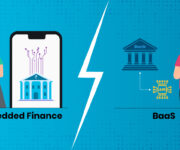Roughly 75%of the Indian population remains without any form of health insurance to date. On the other hand, those who have health insurance are practically in it to save taxes but are unaware of the terms and conditions of their policies.
The majority of Indians still depend on their hard-earned savings or even borrowings for paying their medical bills — thanks to the nation’s decentralised approach to healthcare that makes it optional.
Naturally, it is safe to say — there has hardly been any progress on the medical lending front or making healthcare borrowing simple for the general public.
Indians are getting accustomed to multiple credit products such as ‘buy now pay later schemes for purchasing a mobile phone or even a washing machine.
But it is ironically impossible to find such a payment ecosystem against fundamental human rights such as health and medical emergencies.
This is where the opportunity for embedded finance in the healthcare system of India makes a strong case. This is also where embedded finance can transform the system.
How Can Embedded Finance Transform the Healthcare System in India?
India is one of the most insurance-stricken markets when it comes to healthcare. Research tells us there are many reasons for this discrepancy. One of the primary reasons is exorbitant charges incurred by private health insurance firms.
On the other hand, government health insurances suffer from their issues of insolvency and underfunded statutes.
But things can change with embedded finance.
Embedded finance is the seamless integration of financial services into a non-financial company platform that gives easy payment access to the latter’s customers.
Without creating a separate fintech arm, different businesses can leverage the power of embedded finance and ‘embed’ native financial services right within their platforms.
Now, the question is — how can healthcare companies integrate embedded finance and assist both hospitals and patients in solving the decades-long problem of complex medical payments?
Let’s explore how embedded finance can prove to be the next significant financial disruption and transform India’s healthcare system.
Ways to Incorporate Embedded Finance in Healthcare
Here are the possible ways to ‘embed’ finance into the healthcare ecosystem of India and make credit easy for the general public:
Via Hospitals
The healthcare providers like hospitals, clinics etc. are partnering with the various embedded finance providers being the fintech companies, under which financing is being provided right at the point of care, by way of embedded finance.
How does that work?
Hospitals are paid by the embedded finance providers upfront for any patient invoices, and the patients receive minimal to zero interest instalment based payment options.
However, the catch here is that hospitals have to share confidential patient data with the lenders, which runs the fear of being leaked or misused, making big names in the healthcare industry hesitant to go ahead with the partnership in the first place.
Via the Employers
Employers can offer embedded health care financing to their employees as a solid employee retention and acquisition strategy.
An employee’s creditworthiness rises north when their loan application is backed by a solid employer, and their chances of receiving credit increase substantially.
To add to that, employers already possess a chunk of relevant data on their employees, acquired after a thorough background check and backed by valid proof, making it easy for lenders to underwrite and approve their loans.
By embedding finance directly into their HR tech platforms, employees can receive quick access to healthcare-related credit. Lenders are also repaid on time after deducting TDS from their salary.
Via B2C Platforms
Thanks to technological advancement, many online healthcare platforms within the value chain connect patients, healthcare providers, doctors etc. (for example, Practo).
These platforms have managed to transform how the commoner can access medical services today.
Fortunately, these platforms can serve as the perfect catalyst in offering in-context credit like a BNPL solution and pave the way for embedded finance opportunities in healthcare.
These B2C apps only stand to gain in this situation as they open a plethora of credit options for their customers, leading to better customer retention and an improved user experience.
Benefit of Embedded Finance in Healthcare
Embedded finance in the healthcare sector can be viewed as a frontier in providing quick and seamless finance by connecting the healthcare providers with the lenders.
Here is a bird’s eye view glance of the different benefits to all the stakeholders of the healthcare industry:
Patients
- Better access to formal credit during times of immediate need or emergencies.
- Better access to an improved healthcare infrastructure doesn’t have to hinder themselves in search of finance.
- Plan their finances in a much better manner and avoid pressures of sudden out-of-pocket financial expenses.
- Enjoy better chances of loan approval.
- Choose to have elective surgeries more often (dental, cosmetic) and not avoid them for later.
Hospitals
- Upfront payment from the embedded finance providers.
- Enjoy customer loyalty from their patients by providing quick and hassle-free payment services.
- Build better relationships with their customers.
- Gain access to more and better revenue streams.
Lenders
- Expand their loans customer portfolio substantially
- Cross-sell other products and offerings
- Improve underwriting models considerably by leveraging employees’ data gathered from employers
Embedded Finance and Healthcare – a Transformational Force
Embedded finance has a lot of potential in the healthcare sector in India, from more excellent health insurance coverage to providing better preventive medicine services.
It can also make pricing transparent and provide customers with a variety of payment methods. But, at the same time, it can make the healthcare business more profitable by lowering costs.
Finezza is a cloud-based platform that offers a range of credit evaluation services, lending lifecycle management services, along various embedded functionalities to help financial institutions ramp up their business solutions. Contact us today for more information.




Leave a Reply